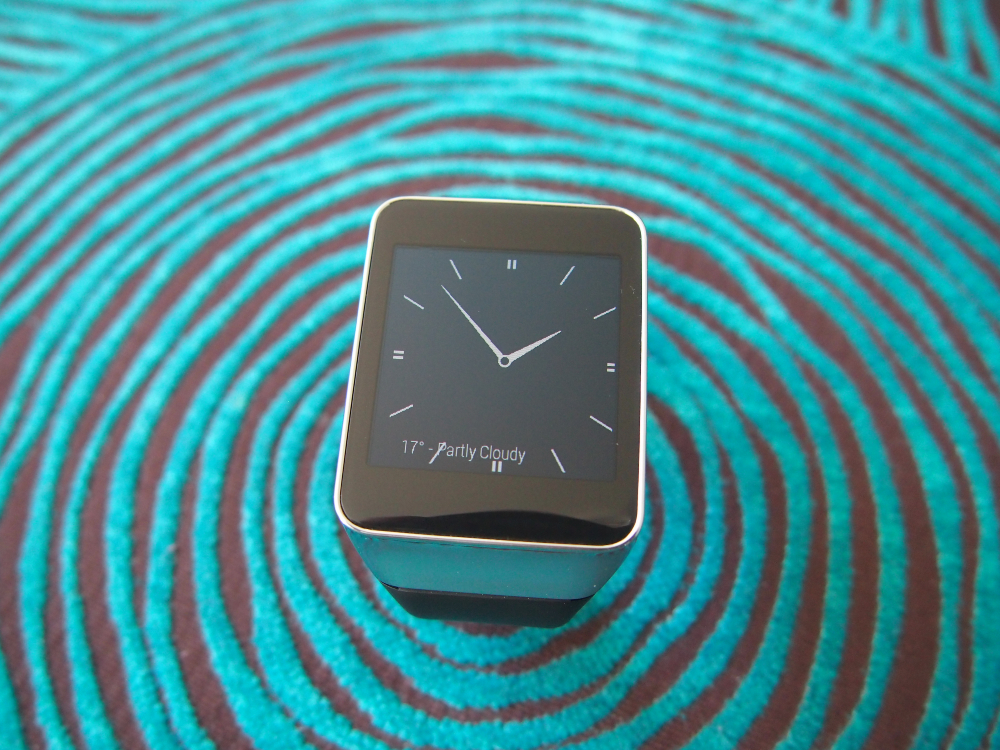
Android Wear is here and the talk around the watercooler amongst techy types is about smart watches. And other things of course, but people are wondering if they should invest in a smartwatch. I know because I’ve been surprised by the number of people who have asked me about the one on my wrist.
Samsung has had an early go at it with their own Tizen OS on the Galaxy Gear range. The Galaxy Gear watches are now in their second generation with the Galaxy Gear 2 and Neo, their latest offerings, replacing the original Galaxy Gear.
So, the Gear Live builds on Samsung’s market experience, something no other Android Wear vendor has. Does this give it an edge over the competition. Possibly. But if that Moto 360 watch actually launches here in Australia any time soon, I’d suggest the Gear Live will have a genuine competitor.
- Design doesn’t compliment formal/professional attire
- Display lacks the sharpness of a 330+ PPI phone
- Large bezels reduce screen size potential
- Battery life is more like a phone than a watch
- Difficult to see in bright direct sunlight
Hardware
Predictably, the world’s biggest manufacturer of Android phones was always going to feature in the release of the first Android powered watches. What wasn’t so obvious was the materials choice they would make. The case of the Gear Live is actually constructed of metal!
Historically Samsung has used metal on their flagship Windows Mobiles, Windows Phones and their own Bada and Tizen devices. But Samsung Android devices are almost exclusively plastic. That changes with the Gear Live.
Rather than go for a classic dress watch look like the upcoming Moto 360, Samsung has opted for a smart and sporty focus. If I was tasked with designing a small wrist mounted computing device for athletes I would probably do something very similar to the Gear Live.
The strap is a winner. It took me a few days to become accustomed to the method of fastening but I now find it easy and hassle free. It has a couple of metal prongs that you simply press into corresponding holes. It doesn’t sound all that reassuring but it holds fast. It hasn’t come loose even once for me.
Although the construction is premium I wouldn’t really describe the design as beautiful. It’s more about comfort and practicality; which it does well. It’s not really what you would wear if you were into expensive jewellery with precision beveled edges and laser cut intricate design. But it’s not ugly either. You’ll probably, willingly wear it with sportswear and casual wear but you may just tuck it under your business suit or evening wear sleeve to hide it.
Display
Here is where Samsung has an advantage over the competition. This Super Amoled display can be run efficiently while it isn’t being used. If you choose “Always-on screen: On” from the settings the display will default to predominantly black with just the arms and numerals in white. More about this in the battery section.
The other advantage to Amoled is the great viewing angles and contrast. Colours don’t seem overly vivid to my eye but if you’re accustomed to a dull display you may feel that ‘punch’ that’s associated with Amoled. My picture above showing the display from an acute angle shows the blue and grey on white background a little less favourably than in real life. It doesn’t help that light grey on white is already a difficult scenario. I wouldn’t expect an IPS LCD to fare any better.
Where the display is a little lacking is in pixel density, although not compared to other currently available watches. To my knowledge, there isn’t any other watch with a higher PPI on the market. The problem is that many of us are using smartphones with a pixel density that is well above 300 PPI. Even the humble Moto G has 326 PPI.
So, you do notice that there is a little less sharpness compared to the phone you’re most likely pairing your watch to. I think many folk that want to buy the watch now will overlook that. We’re hoping the 2nd generation of Android Wear devices will address this with more pixels. While they’re at it, a bit less bezel and a bit more display area would be nice too.
I’ve found the display brightness to be adequate for all situations except direct sunlight. If you must look at your watch in direct sunlight for significant periods of time during the day then I guess this watch won’t really work for you. I suspect that’s not many folk, but if it is you then I guess you’ll have to wait for a model that can do at least 500 nits of brightness or have awesome reflectance at lower levels of brightness.
Performance
I’m not sure if Android Wear is designed to run at 60 frames per second like Android L but I suspect that’s the target. It is quite smooth with just the odd dropped frame every now and then. I tend to notice it when dismissing items with a side swipe. The touch response seems to have some small initial latency too. While scrolling isn’t quite 1:1 with your finger, it didn’t bother me at all since there’s very little screen area to move on anyway.
If I had to compare the responsiveness to a phone I would probably say it’s pretty close to something like a Moto G. Definitely not slow and laggy but not blisteringly fast either. It’s running a ARM Cortex A7 SoC in the form of a Qualcomm Snapdragon 400. ARM have posted a teardown on their Community Blog, confirming the SD 400 which is a similar part to the Moto G. Unlike the LG G Watch, the Gear live has a useful side mounted power button that when long pressed can get you straight into the buried settings menu. Sadly, the long press is of the 2 second variety. This sort of delay is frustrating but it’s a tad quicker than going in the long way.
I don’t want to paint a bleak picture though because most of what you normally would use the watch for happens quickly. The display wakes quickly and getting to your notifications is fast and easy. Placing your palm over the watch powers down the display in an instant and the “OK Google” command is responded to promptly – assuming you’re in a reasonably quiet environment. Here’s an example showing how you can get a hands free reminder set in only 12 seconds.
Battery
This may be a little controversial but I’m happy with the battery life. I’ve had the Gear Live for a few weeks now and I’ve tried lots of different usage patterns. At the moment I’m getting 2 full days of use. Watch comes of the charger Monday morning. It goes back on the charger Tuesday night. I keep the display at maximum brightness and the screen is set to always on. I turn the screen off while I’m sleeping – no point in it being on. I’m pushing all my notifications to the watch and silencing them on my phone – a Nexus 5 running the Android L Preview. To me, this is the idea of the watch; to give you information that saves you pulling the phone out of your pocket and turning on the display. Consequently, my phone battery life has increased dramatically.
The other awesome thing is that the Bluetooth connection is not draining my phone battery – I honestly expected that it would. I’m really surprised that my phone battery isn’t getting smashed by all the data transferring over Bluetooth. I also tried setting the screen to turn off so that the display is only on when I use the elbow up, wrist turn gesture. I can get closer to 3 days use with those settings. The trade off is that you have to wait half a second until you’ve performed the gesture and screen resumes.
I realise that many people will expect a longer battery life than this because a regular watch that doesn’t have a display made of light pixels lasts much longer. Forgive me but I think that’s unrealistic, especially for a first generation product like these Android Wear devices. We have come to expect a day or two of battery life from our smartphones and I don’t think watches should be any different. The brightness of the display and the size of the smartwatch battery seems to me to be fairly proportional to the brightness of the display and the size of the smartphone battery. It’s all about managing those constraints cleverly. I think the hardware and software combined do a terrific job. But, as we always say, “Your mileage may vary”.
Charging
The charging dock, if you could call it that, is a rather flimsy pogo pin type affair that plugs into a microUSB cable. It feels like it weighs nothing, feels hollow and doesn’t give you any confidence that it will last long. This is important because there’s no way to charge the watch without the dock! Despite these facts, I find it easy enough to mount and when it’s locked in place it doesn’t come loose – even if you swing it by the cable like a clock pendulum. It will take a little practice to master mounting, but I doubt any of you clever readers will be too troubled by that.
Much like a smartphone, the watch will charge up from empty to full (99%, amusingly) in a bit over two hours with the included wall pluggable cable. It will pump juice into that tiny battery at a piddly rate of up to 0.55Amps. I haven’t tried a more powerful cable as I’m a little scared of cooking the watch. There isn’t exactly much room for heat dissipation inside these smart watches.
Connectivity
There isn’t a whole lot on offer here but perhaps thats a good thing. The main connection is Bluetooth. As I mentioned in the battery section above, a fantastic job has been done to allow quick syncing of information and very little battery power needed to achieve the task. While there is no speaker on the watch, you can “connect” to it with your voice via a side mounted microphone.
Some folk may bemoan the fact that it doesn’t have it’s own on board WiFi but I suspect that would just add complexity to the hardware and software design. If your watch is connected to WiFi you’re essentially getting the same thing. Likewise I’m not in favour of having yet another gadget to put a sim card into either. Enabling ADB debugging in Developer options and connecting to a Windows PC will install drivers but the device is classed as an unknown device. I’m not sure what may be possible via a USB connection but it seems at least debugging is possible.
Software
Android Wear as a platform is enjoyable to navigate once you get the basics of how it works. It took me a couple of days of fiddling around to get the hang of it. While this isn’t ideal, it’s a new interface and all new interfaces take some time to adapt to. The Gear Live uses the standard Android Wear layout so I won’t being going over that in this review. Google aren’t allowing any changes to it (breathes sigh of relief, for now) except for the inclusion of some useful apps.
Samsung Heart Rate Monitor App
Google Fit Heart Rate Monitor App
One useful app is the Samsung Heart Rate Monitor. Although this is somewhat a duplication of the Heart Rate app included in Google Fit, I prefer the Samsung app because it is more explanatory, making it easier to use. The Google Heart Rate Monitor has less steps but just dumps you into the measurement screen, leaving you wondering. if you just used the Google version in a noisy environment or while you were moving you would wonder why it wasn’t working. At least Samsung tells you how to use it for best results! The other good thing is that it’s there to begin with and that makes it a selling point against other watches that don’t have the sensor hardware built in. I do find it useful for tracking that aspect of my health.
Samsung Stopwatch App
Google Clock Stopwatch App
Samsung has also provided a Stopwatch app that is in addition to the stopwatch function of the Google Clock app. Although this is also doubling up, the Samsung app is more useful because it also incorporates a lap feature which some will find useful. If you’re a lap runner I’d reckon you’ll probably appreciate that feature. The Google app is once again more simplistic and colourful. I don’t suspect that adding these 2 apps have any impact on system performance. Likewise, the space they take up is probably negligible in light of their usefulness.
One of my favourite tricks is how Android Wear uses the sensors inside to know when you want to look at your watch. A simple turn of the wrist while you raise your elbow turns the display on. It’s clever and I’ve not had any issues with it working. Another thing I do appreciate about Android Wear is all the gorgeous background wallpapers used behind app information. If you’re interested in seeing them I’ve put together in a gallery here.
Samsung Gear Live Specifications:
- 1.63″ 320×320 SuperAMOLED Display (278 PPI)
- Quad core Snapdragon 400 @ 1.2 Ghz
- Adreno 305
- 512MB RAM
- 4GB Storage
- Bluetooth 4.0 Low Energy
- Accelerometer, Digital Compass, Gyroscope, Heart Rate Monitor
- 300 mAh Battery
- USB (pogo pin) port via dock.
- 37.9 x 56.4 x 8.9mm, 59g
- A smartphone running Android 4.3 or higher is required to pair with the watch.
So, you may have figured out by now that I quite like the Gear Live. Due to a delay in receiving Ausdroid’s review unit, my own Gear Live has been used for this review. The fitness extras are useful to me and the comfortable way in which it has been designed is something to appreciate. The construction materials are premium quality and should last. As a tool for checking notifications I prefer to use it over pulling out my phone.
While the display is completely usable in most places where I find myself, I could see an improvement in direct sunlight visibility to be something for the next model to correct. If I’m to upgrade to a different watch any time soon I’d like it to have at least 330 PPI so it offers the same level of sharpness I’m used to in my phones. In fact, a bit more display and a bit less bezel would be nice too.
It’s pretty rare that I find myself in formal attire so the sporty design of the watch doesn’t deter me. I realise that will be different for some of you. I guess you’ll have to weigh that up yourself, particularly if you need to wear something like a business suit. For some it may be a question of “Do I want to spend $250 on something that my phone can already do?” Fair question, especially if a spare $250 isn’t easy to come by.
If you’re in the market for a new watch you may want to ask yourself “How many times per day do I need to grab my phone from a pocket, power on the screen, pull down and read the notifications, just so I can keep up to date?” If your answer has a significant number in it I’d suggest an Android Wear watch like the Gear Live could be useful to you. If not, you could probably get by with a regular watch – dare we call them Dumbwatches?
One last question. Do you want more interaction with real people and less with your smartphone? If you do you’ll be happy to know that I use my phone a whole lot less now. The fact that a watch can’t do as much means you don’t get stuck in antisocial mode! Your significant others will appreciate that, assuming they’re not also lost in all the features of their smartphone.
You can purchase the Samsung Gear Live from Google Play for $250 + $20 shipping. The website shows the item as “In stock” and shipping in 1 – 2 business days. Mine took 3 or 4 days from order to delivery. There is only one colour – Black.

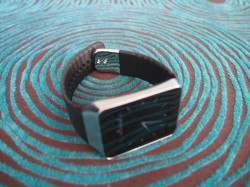
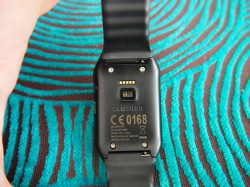

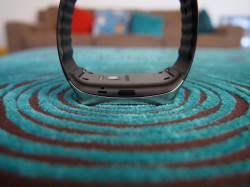
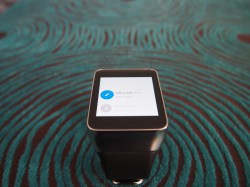
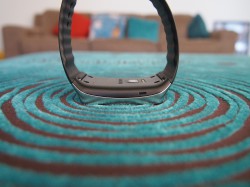
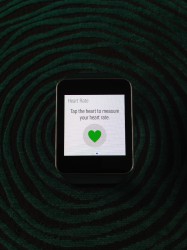
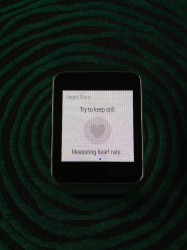
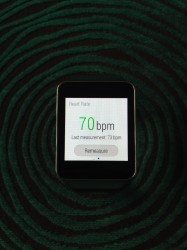

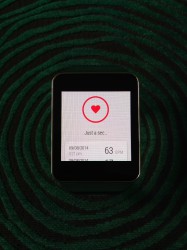
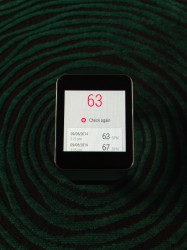
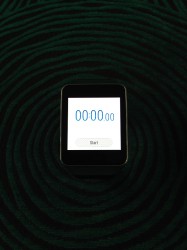

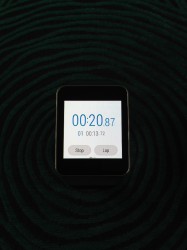
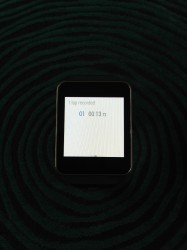
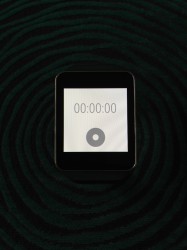

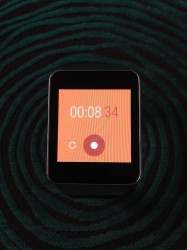



Looks like this is available at the Good Guys for $198? http://www.thegoodguys.com.au/buyonline/Samsung_Gear_Live_-_Black_R3820BL